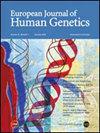Homozygous COQ9 mutation: a new cause of potentially treatable hereditary spastic paraplegia
IF 4.6
2区 生物学
Q2 BIOCHEMISTRY & MOLECULAR BIOLOGY
引用次数: 0
Abstract
Primary Coenzyme Q10 (CoQ10) deficiencies are a group of clinically heterogenous mitochondrial disorders that result from defects in CoQ10 biosynthesis. Their diagnosis is complicated by the absence of pathognomonic signs and poor genotype-phenotype correlations. Pathogenic variants in the COQ9 gene are a rare cause of CoQ10 deficiency: few cases have been reported, and the clinical presentation was described as a very severe multisystemic disorder with neonatal onset, ultimately leading to premature death. Through exome sequencing, we identified a novel homozygous splicing variant c.73 G > A in the COQ9 gene (NG_027696.1, NM_020312.4) in two adult siblings who presented with pure spastic paraplegia with onset in childhood. mRNA analysis from different tissues of one of the siblings revealed that this variant alters COQ9 splicing, resulting in undetectable levels of COQ9 and COQ7 proteins and reduced concentrations of CoQ10 in muscle and fibroblasts. Additionally, the accumulation of 6-demethoxycoenzyme Q10, the substrate of COQ7, was observed in both plasma and fibroblasts. Furthermore, fibroblast proliferation rate was reduced when enhancing the mitochondrial metabolism by replacing glucose with galactose in the culture medium, and was rescued by the addition of exogenous CoQ10, suggesting a therapeutic avenue for these patients. Altogether, we report here the first example of hereditary spastic paraplegia related to a mutation of the COQ9 gene that expands the spectrum of clinical manifestations and opens new therapeutic opportunities.

纯合子辅酶q9突变:潜在可治疗的遗传性痉挛性截瘫的新原因。
初级辅酶Q10 (CoQ10)缺陷是一组临床异质性线粒体疾病,由辅酶Q10生物合成缺陷引起。由于缺乏病理征象和基因型-表型相关性差,其诊断变得复杂。辅酶q9基因的致病性变异是辅酶q10缺乏的罕见原因:很少有病例报道,临床表现被描述为新生儿发病的非常严重的多系统疾病,最终导致过早死亡。通过外显子组测序,我们在COQ9基因(NG_027696.1, NM_020312.4)中发现了一种新的纯合子剪接变异c.73 G > a,这两个成年兄弟姐妹表现为儿童期发病的纯痉挛性截瘫。来自其中一个兄弟姐妹不同组织的mRNA分析显示,这种变异改变了COQ9剪接,导致COQ9和COQ7蛋白水平无法检测,并降低了肌肉和成纤维细胞中CoQ10的浓度。此外,在血浆和成纤维细胞中观察到辅酶q7的底物6-去甲氧基辅酶Q10的积累。此外,在培养基中用半乳糖代替葡萄糖增强线粒体代谢时,成纤维细胞增殖率降低,并通过添加外源性辅酶q10来恢复,这为这些患者提供了一种治疗途径。总之,我们在这里报告了第一例与COQ9基因突变相关的遗传性痉挛性截瘫,这扩大了临床表现的范围,并开辟了新的治疗机会。
本文章由计算机程序翻译,如有差异,请以英文原文为准。
求助全文
约1分钟内获得全文
求助全文
来源期刊

European Journal of Human Genetics
生物-生化与分子生物学
CiteScore
9.90
自引率
5.80%
发文量
216
审稿时长
2 months
期刊介绍:
The European Journal of Human Genetics is the official journal of the European Society of Human Genetics, publishing high-quality, original research papers, short reports and reviews in the rapidly expanding field of human genetics and genomics. It covers molecular, clinical and cytogenetics, interfacing between advanced biomedical research and the clinician, and bridging the great diversity of facilities, resources and viewpoints in the genetics community.
Key areas include:
-Monogenic and multifactorial disorders
-Development and malformation
-Hereditary cancer
-Medical Genomics
-Gene mapping and functional studies
-Genotype-phenotype correlations
-Genetic variation and genome diversity
-Statistical and computational genetics
-Bioinformatics
-Advances in diagnostics
-Therapy and prevention
-Animal models
-Genetic services
-Community genetics
 求助内容:
求助内容: 应助结果提醒方式:
应助结果提醒方式:


